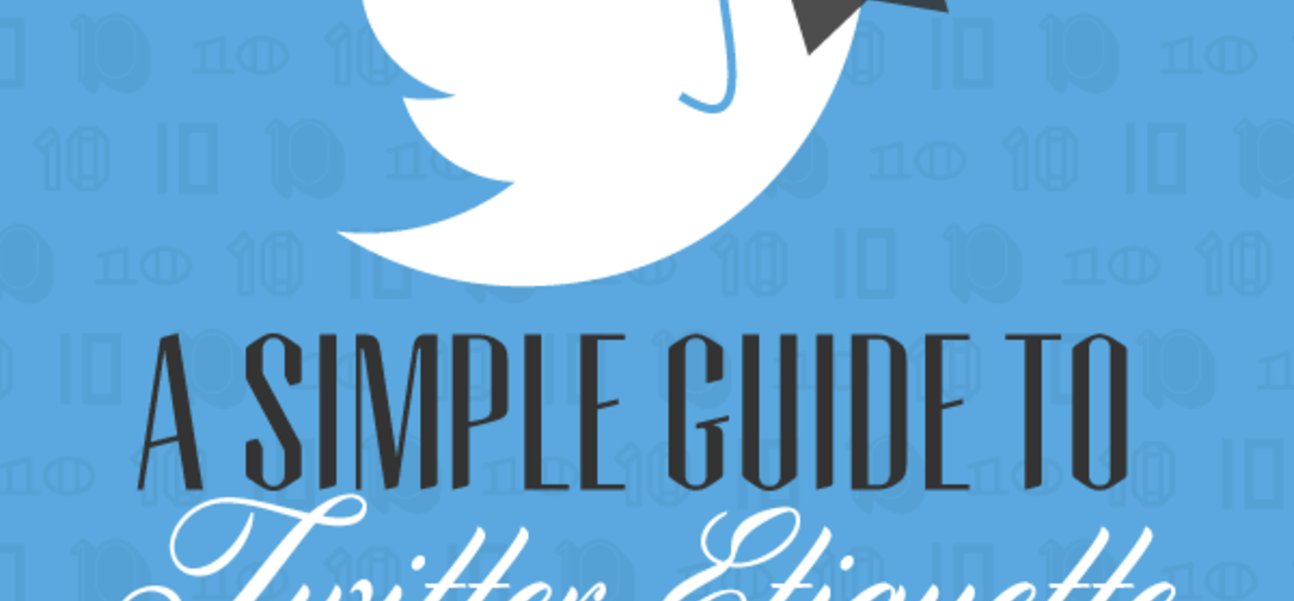Social media has become an essential when it comes to marketing and promoting your business. The world-wide-web is packed full of social media outlets for you to utilize, and the micro-blogging platform of choice for most (boasting over 200 million users) isn’t Facebook or Instagram, it’s Twitter!
Twitter is all about sharing your interests, thoughts and opinions. If you’re lucky, you can accumulate followers who are genuinely interested in what you have to say. However; if your content, user interactions or posting frequency aren’t up to snuff, you may be driving followers away. No followers means no line of exposure and exposure is a major component of a successful business.
We have brainstormed and put together this collective guide to Twitter etiquette to help put your best foot forward on this highly influential platform.
1) Don’t Spam
If you take away one rule from this list, take this one.There are many ways to spam on Twitter - one is to simply follow hundreds of people in hopes they will return the favour. Not only is this ineffective, it is clearly noticeable in your Twitter profile. Whenever a profile shows a high number of unreciprocated followers, it is usually a pretty good guess that they are looking to spam.
Another common way to spam is by constantly sending out tweets that say things like: “Sign up for my RSS Feed!” or “Check out my new blog post!”. Occasional tweets like these are acceptable, but they need to be mixed in with other tweets as well. We like to follow an 80-20 rule of thumb, 80% engagement with your online community and only 20% self-promotion. Follow this rule and you are sure to have a healthy following.
2) Content
You have probably heard it before, either from us or through the grapevine, “content is king”. It ultimately determines the number of followers you accumulate as well as whether or not people even follow you in the first place. No one follows an empty feed, nor a feed full of content they aren’t interested in.
A good first step is to simply listen and observe. Take some time to see what other similar businesses are doing on Twitter and develop your own content strategy. You can then try testing similar tactics to see what posts resonate the most with your followers.
The majority of your tweets should focus on interactions with your followers. Once you’ve built yourself a good rapport, you can mix in direct offers, promotions, or other tweets that require your followers to take action. Like links to your latest blog post for example.
Don’t be afraid to let your personality shine! Strive for an approachable tone of communication that is genuine and friendly without being too formal. Showing wit and humour can add entertainment value, don’t let a commitment to a structured strategy drown out your unique voice.
Think of Twitter as a 24-hour, 7 day a week networking party. Be yourself, just like you would be if there in person and you will be sure to build a network that you can be proud of.
3) The Golden Rule
If someone new follows you, feel free to follow them back; just know that its not an obligation. If someone has re-tweeted your post, feel free to favourite it or RT one of theirs if its truly relevant to you or its something you find interesting. In the end, the ultimate test of tweet etiquette is gauging how other people would react.
Be respectful, tell the truth and keep things relevant and interesting. If you’re building an online community and they’re responding to what you’re writing; chances are you’re on the right track.
Twitter is just one of the many forums of social media we specialize in here at Box Clever, and it is one of the most effective ways to bring awareness to your brand or business. If you would like to learn more about Twitter or other Social Media and Online Marketing strategies for your business give us a shout.
